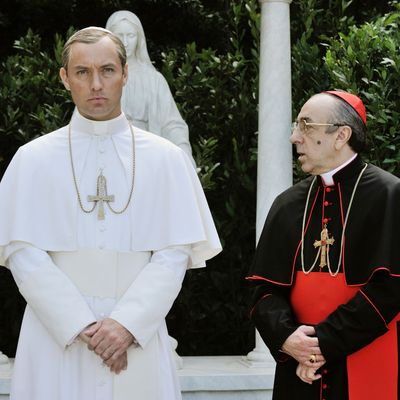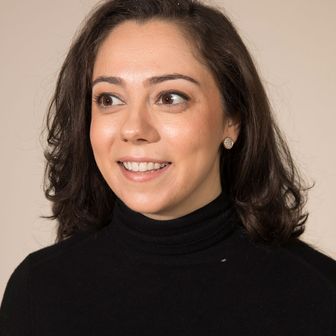
Drama. Intrigue. Ominous black smoke. No, I’m not talking about the last season of Lost. With HBO’s bonkers new drama The Young Pope, which aired on Sunday night, we know you have a lot of questions regarding the big guy in the red shoes. As Vulture’s resident Catholic schoolgirl, I’m here to bring you Pope 101. How, exactly, does one elect a pope? Who chooses him? Why should I even remotely care? Grab your white robes and your gold crucifix, and I’ll answer your questions below.
Who can be elected pope?
Let’s start off simple. Ya gotta be a dude. According to the Vatican’s Cannon Law, the pope has to be a bishop or must immediately be ordained a bishop upon his election, because technically the pope is also the Bishop of Rome. Only men can be ordained priests, so only men can be bishops, so only a man can become the pope. (Sorry, Diane Keaton.) There are only five requirements to becoming a bishop. I’ll break them down for you in layman’s terms: You need to be “outstanding in solid faith” (duh), “of good reputation” (again, come on), at least 35 years old, have been ordained to the “presbyterate” (a.k.a. priesthood) for at least five years, and have a degree in theology that is approved by the Vatican. At 47, our young pope technically could have been even younger. Idea for season two?
Who elects the pope?
The College of Cardinals. This is the fancy name for all the cardinals of the Catholic church. They range in age, but only cardinals under 80 years old are eligible to vote for the pope. Currently, there are 227 cardinals, but because a lot of them have been around since the era of Mussolini, only 120 could vote if a papal election were held today. For the past 700 years, the pope has been a cardinal, so it’s very likely that one of these bros is going to be your next papa.
Where and when does the electing take place?
Here is where the process gets a bit Skull and Bones. After the death or resignation of a pope, the College of Cardinals descends upon the Vatican to participate in what’s called a papal conclave. This is a secret meeting held in the Sistine Chapel where the cardinals can cast their ballots for whom they think should be the pope. There’s even an oath of secrecy. The voting can go on for days, but once a two-thirds majority is reached, we have a new pope.
How do we know when they’ve reached a decision?
Now this is the fun part. After every cardinal has cast his vote, the ballots are burned in a special oven inside the Sistine Chapel. If a decision isn’t reached, black chemicals are added to the fire to create a black smoke that puffs out of a chimney and into St. Peter’s Square. If a pope has been selected, chemicals are added to create white smoke. Black, nope. White, pope. Eagerly awaiting the white smoke is one of the true joys of Catholicism, after Christmas and Stephen Colbert.


